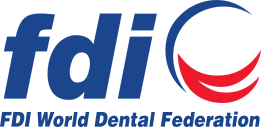Tips and tricks for a successful maxillary sinus grafting - Maxillary sinus graft complications and their management
Location
Speaker
Dr Achille Peivandi
Dr. Peivandi Achille,
DDS, Oral Surgeon, Periodontology, Implantology
1991 – 1995: Dental school, Garancière University Paris VII
1995 – 2000 : Mastership in Dental Science, Lyon I Claude Bernard University
2000 – 2001 : Anatomy and Imagery Certificate
2000 – 2003 : Post Graduate in Implantology, Lyon I Claude Bernard University
2003 – 2006 : Assistant Professor, department of periodontology
2000 – 2015 : Responsible of Anatomy and cadaver courses, Lyon I Claude Bernard University
2007 : Founder, Director of API (association de parodontologie et d’implantologie)
2007 : Founder, Director of IntraClinic ( Post graduate courses in advanced Implantology )
2000 – 2024 : Private Practice in Lyon (France )
2004 - 2024 : Hospital practitioner ,HEAD of the Oral surgery Unit , Maxillo facial department, Lyon
north pole.
International lecturer
Expert on dental XP
membre of DDS
member of EAO
Organizer
Abstract :
The placement of endosseous implants in posterior edentulous maxilla is normally a challenging task in implant dentistry due to maxillary sinus pneumatization. Various sinus augmentation techniques have been used with impressive success rates aimed at developing these sites for implant placement. Knowledge of anatomy of maxillary sinus guides us not only in proper preoperative treatment planning but also helps us to avoid the possible complications that may arise during sinus augmentation procedure. This topic attracts a rising number of publications with most of them reporting results that suggest, the patients with atrophic maxillae requiring implant treatment can benefit considerably from the use of sinus augmentation. This presentation explains the basic techniques, namely, direct and indirect techniques used for maxillary sinus elevation and retrace the evolution in the technics used since 50 years now.
Learning objectives :
- how to avoid per operative surgical complications
- how to handle per operative surgical complications such as bleeding or mucosal lining perforations
- how to handle post operative complications such as infections or bad healing
- all the tips and trick in order to performe a save and reproducible protocol
